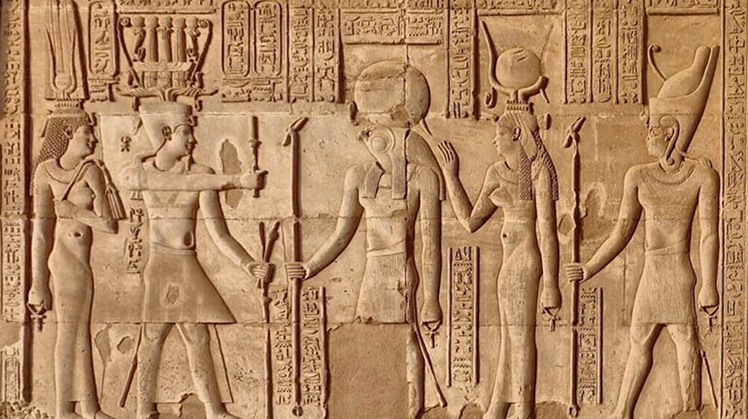Archaeologists on San Vicente Hill in Salamanca, central northern Spain, discovered amulets of the Egyptian goddess Hathor, made in ancient Egypt, during archaeological work led by a team of archaeologists from the University of Salamanca. What is the story of the goddess Hathor?
Hathor is an ancient Egyptian goddess, the goddess of heaven, love, beauty, happiness, music, and fertility. She was called in the past by the name of Bat and was found on the Narmer board, and was symbolized by the cow, and sometimes in the image of a woman with a cow's ear, her worship was between the city of Ashmounin near the Fayoum and the city of Abydos near Sohag.
The meaning of Hathor is the House of Hor or the sanctuary of Hor, as it is the one who sheltered the orphan Horus, son of Isis and nursed him, thus becoming a mother to him and to all nature as a symbol to the sky, then they made her a patron of the dead and inhabited her soul what is planted on their graves of sycamore trees, then they made her from the branches a body that sends the sky The thirsty ones who slept in the pens of death, and imagined that she sometimes roams the desert west of the Nile in the form of a lioness to protect the graves there.
It is reported that during the recent excavations in the San Vicente Hill in Salamanca, central northern Spain, amulets were found for the Egyptian goddess Hathor, made in ancient Egypt and reached the peninsula around 1000 BC, and the discovery came during archaeological work that began in the nineties of the century. The past was led by a team of archaeologists from the University of Salamanca, headed by Antonio Blanco, and the Salamanca Municipal Council, Carlos Macaro and Cristina Alario.
Archaeologist Carlos Macario told the Spanish news agency that the amulets bearing the image of the Egyptian goddess Hathor, the goddess of happiness, motherhood and love in ancient Egypt, reflect the trade exchange in the early years of the Iron Age between 900 and 400 BC in the Iberian Peninsula, specifically in the ancient site of Salamanca. And La Plata Road after that.
 Wed, Aug. 25, 2021
Wed, Aug. 25, 2021